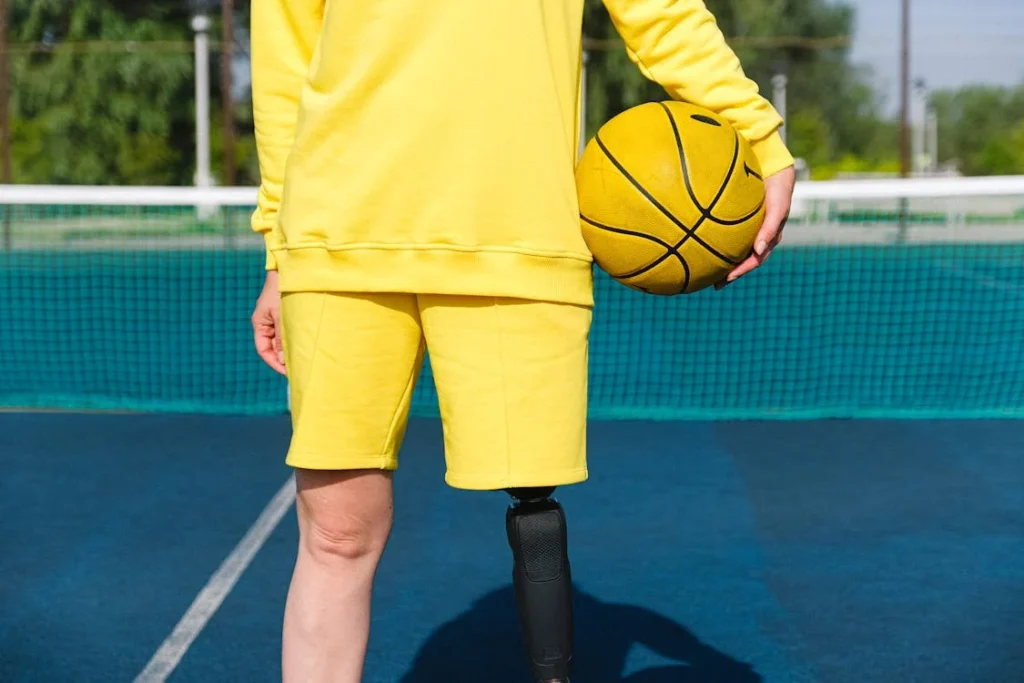Getting a prosthetic fitted early after amputation can be a turning point. It’s not just about walking faster. It’s about helping your body heal, strengthening your mind, and making your life better in every possible way. The earlier you begin to bear weight through a prosthesis—safely and with professional support—the smoother and more successful your recovery tends to be.
Let’s walk through exactly what happens when you fit sooner, and why this step is more powerful than most people realise.

The Healing Power of Early Weight-Bearing
Why Your Body Responds Better to Pressure and Movement
After an amputation, your body is trying to rebuild itself. Your skin is closing, tissues are reorganising, and muscles are adjusting to a new way of working.
Most people believe rest is the best route to healing. But with prosthetics, movement often matters more. Early weight-bearing—carefully placing pressure through the residual limb using a prosthesis—gives your body the signals it needs to recover faster and better.
When you begin walking or even just standing with a preparatory prosthesis, your body starts to respond. Blood flow improves almost instantly. This increased circulation carries oxygen and healing nutrients to the tissues around your surgical site.
That alone can speed up recovery. But that’s just the start. The very act of standing engages your core and residual limb muscles. These muscles, if left unused, will shrink.
But if they’re given the job of helping you balance and shift weight, they start to stay active. That means less atrophy, more strength, and a smoother journey when you transition to your permanent prosthetic.
Weight-bearing also toughens your skin. The residual limb must learn to tolerate pressure, heat, and sweat. If you delay fitting, your skin stays soft and unprepared, making you more likely to develop painful blisters later on. But early, gentle pressure helps the skin adapt gradually and naturally.
So what does this mean in practice? Patients who fit their prosthetic early often have fewer complications. They heal quicker, they avoid bone density loss, and they stay stronger throughout the rehabilitation journey.
Every step, even the smallest one, builds momentum. And that momentum is one of your most valuable assets during recovery.
Wound Healing and Limb Shaping: Why Timing Changes Everything
How a Well-Timed Fit Speeds Up Skin Recovery and Prepares Your Limb
Wound healing after amputation isn’t just about the incision closing up. It’s also about managing swelling, shaping your residual limb, and preparing the tissues to support the socket of your prosthesis. All these things benefit from controlled early weight-bearing.
When you delay weight-bearing, fluid often builds up in your limb—a condition called edema. This fluid slows healing, increases discomfort, and makes your limb take on a bulky, uneven shape.
If your limb is too swollen or has an irregular contour, it becomes harder to fit a prosthetic comfortably. In some cases, the socket may need to be redone several times to get it right, costing time, money, and energy.
Early prosthetic fitting, when combined with compression therapy, helps manage this swelling. A temporary socket and compression liner gently guide the limb into a more even, cylindrical shape—the shape most suitable for long-term prosthetic fitting.
Your prosthetist adjusts the socket as the swelling reduces and the limb reshapes. This process, done early, saves a lot of trouble down the line.
Then there’s the skin. Healing skin needs oxygen, movement, and gentle stimulation. Early weight-bearing boosts circulation, which brings oxygen-rich blood to the wound site. It also signals the skin to prepare for future pressure and contact.
The result? Quicker closure, less scar sensitivity, and fewer skin-related problems when you eventually move to a definitive prosthesis.
One more point often missed: early weight-bearing limits bone overgrowth. When a limb is inactive for too long, the bone at the end can start to grow erratically—something called a bone spur or heterotopic ossification.
This causes pain and may require surgery. But when weight-bearing starts early, it sends clear messages to the bone: “You’re being used properly.” That alone can help prevent future complications.
So, timing matters—a lot. The difference between waiting and acting early is often the difference between a smooth rehab and a frustrating one.
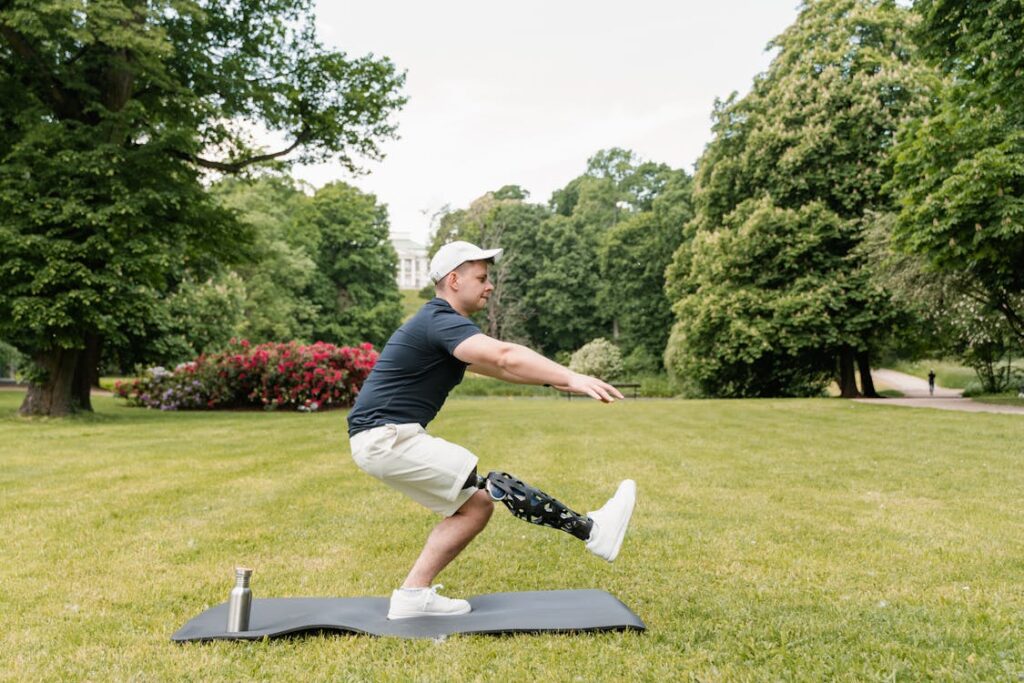
Faster Return to Movement and Independence
Why Early Fitting Leads to Quicker and Easier Walking
Regaining the ability to walk isn’t just a physical change—it’s a mental and emotional win. Early prosthetic fitting makes that win come sooner.
When you start weight-bearing early, you’re essentially giving your body a preview of what full mobility feels like. And once you get that preview, your entire rehab journey speeds up.
Patients who walk sooner tend to learn better. That’s because our brains work through repetition. Walking isn’t just about putting one foot in front of the other.
It’s about balance, coordination, and rhythm. When you delay walking, your brain doesn’t get the feedback it needs to build those neural pathways. But when you start early, your brain and body sync up faster.
This early feedback loop helps you adapt to your prosthetic more naturally. You begin to trust your device. You learn how to shift your weight, how to recover if you trip, how to stand for longer periods without pain.
Every small movement adds up to a big confidence boost. And confidence changes everything.
Let’s also not ignore your muscles and joints. Early weight-bearing activates the muscles that support your pelvis, back, and remaining limb. These muscles are key to keeping you upright.
If they’re not used, they weaken. If they’re used from the start—even lightly—they become your support system. That support system makes standing, walking, and even climbing stairs feel easier, sooner.
And when movement gets easier, life gets easier. You start to do more things on your own. You don’t need help getting out of bed or going to the kitchen. That sense of independence is one of the biggest emotional wins you can get after limb loss.
So yes, walking matters. But more than that, what matters is when you start. Earlier is almost always better—as long as it’s done with medical support and the right prosthetic design.
Psychological Impact: Confidence, Motivation and Mental Strength
Why Moving Sooner Makes You Feel Stronger Inside
Losing a limb changes your world in a matter of hours. The emotional toll is heavy. Fear, anxiety, grief, and self-doubt can take over. But there’s one thing that helps consistently: taking action.
And early weight-bearing—stepping onto a prosthetic sooner than expected—is one of the most powerful actions a patient can take.
When you begin using a prosthetic early, something shifts. You start to feel in control. Instead of waiting for healing to happen, you become part of the process. That shift—from passive patient to active participant—is a mental breakthrough. It brings motivation. It brings hope.
Imagine this: you’re in a hospital bed, unsure of what comes next. Then, within a couple of weeks, you stand—on your own, with a prosthetic. That moment stays with you. It’s proof that you’re still capable. It’s a clear, physical sign that your life isn’t stuck.
Beyond the emotional lift, early prosthetic fitting helps fight depression. Studies show that immobility increases feelings of hopelessness and social withdrawal.
People who don’t move tend to isolate themselves. But when you move—even a little—you rejoin life. You start to participate again, talk more, and feel connected.
There’s also the fear factor. Many patients are scared of using a prosthetic. They imagine it will be painful, hard to balance, or embarrassing. But when they fit early, these fears fade.
They realise it doesn’t hurt, that they can balance, and that it’s not a source of shame. It becomes just another tool—like glasses or a crutch—to help them function.
Early fitting also builds trust in your rehab team. You begin to see results, and that gives you confidence in the process. That trust makes you more likely to stick with therapy, to follow exercises, and to stay engaged. This engagement is what truly drives long-term success.
Emotional healing isn’t separate from physical recovery. The two are deeply connected. When your body starts moving, your mind starts believing. And belief is the foundation of resilience.
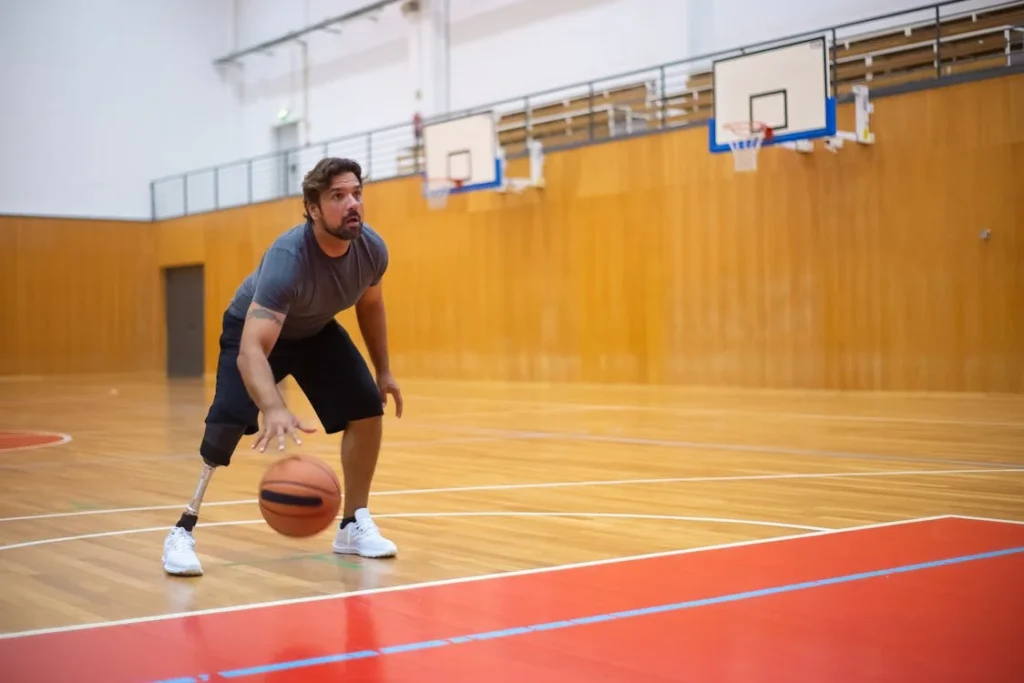
Financial and Long-Term Health Gains
Why Fitting Sooner Pays Off in Every Way
Early prosthetic fitting isn’t just about physical and mental health—it’s about smart planning. It saves time, it saves money, and it helps you avoid years of unnecessary treatment. Think of it as an investment: act early and reap the benefits for years to come.
First, consider healthcare costs. When you delay prosthetic fitting, complications tend to pile up. You might develop pressure sores, infections, bone spurs, or contractures—when joints freeze due to lack of movement.
Treating these issues is expensive. You may need hospital stays, surgeries, extra physical therapy, or even revision procedures. Each of these adds financial stress.
But with early weight-bearing, many of these risks shrink. You stay healthier, need fewer treatments, and spend less time under medical care. You also avoid the cost of multiple socket adjustments. When the limb is shaped early, your final socket fits better and lasts longer.
Then there’s work. Returning to your job—or even just to your normal daily tasks—can take months if you wait too long. But if you’re fitted early, your recovery time shortens.
That means getting back to earning sooner, staying independent, and reducing the cost of outside help or caregiving.
And let’s not forget long-term health. People who remain inactive after amputation often develop lifestyle diseases: diabetes, heart issues, obesity.
These are expensive and difficult to manage. But early movement reduces those risks. You stay more active, your metabolism works better, and your energy levels improve.
In simple terms: early fitting is cheaper in the long run. It’s less hassle, less pain, and more stability. It gives you a better quality of life—and protects your savings at the same time.
Early Prosthetic Fitting and Bone Preservation
How Timely Pressure Helps Prevent Bone Loss and Structural Weakness
One of the least talked about—but critically important—benefits of early weight-bearing is how it affects your bone health. When a limb is amputated, the remaining part of the bone no longer receives the same mechanical load that it once did.
This lack of load triggers a reaction inside the bone where it starts to lose density. Known medically as “disuse osteopenia,” this process can severely weaken the residual limb and make future rehabilitation more difficult.
But here’s the good news: early weight-bearing prevents this. When your prosthesis allows for gentle, guided loading of your residual limb, it tells your bones that they are still needed.
The body reacts by preserving bone mass. That makes the limb stronger and more capable of supporting long-term prosthetic use.
This preservation becomes especially important for older adults. As we age, our bones naturally become more fragile.
A delay in prosthetic fitting can lead to faster deterioration in these individuals, putting them at risk of fractures and increasing their dependency on assistive devices. But with an early fit, you not only support your bones—you support your independence.
What many patients also don’t realise is that strong bones improve socket stability. A well-preserved residual limb with healthy bone density creates a solid foundation for the socket.
The result? A more secure and comfortable fit. That leads to less shifting, fewer pressure points, and lower chances of needing socket modifications later on.
So while muscle and skin get most of the attention, bone deserves a seat at the table. It is your structural base—and early prosthetic fitting gives it exactly the attention and stimulus it needs to stay strong and functional for years to come.
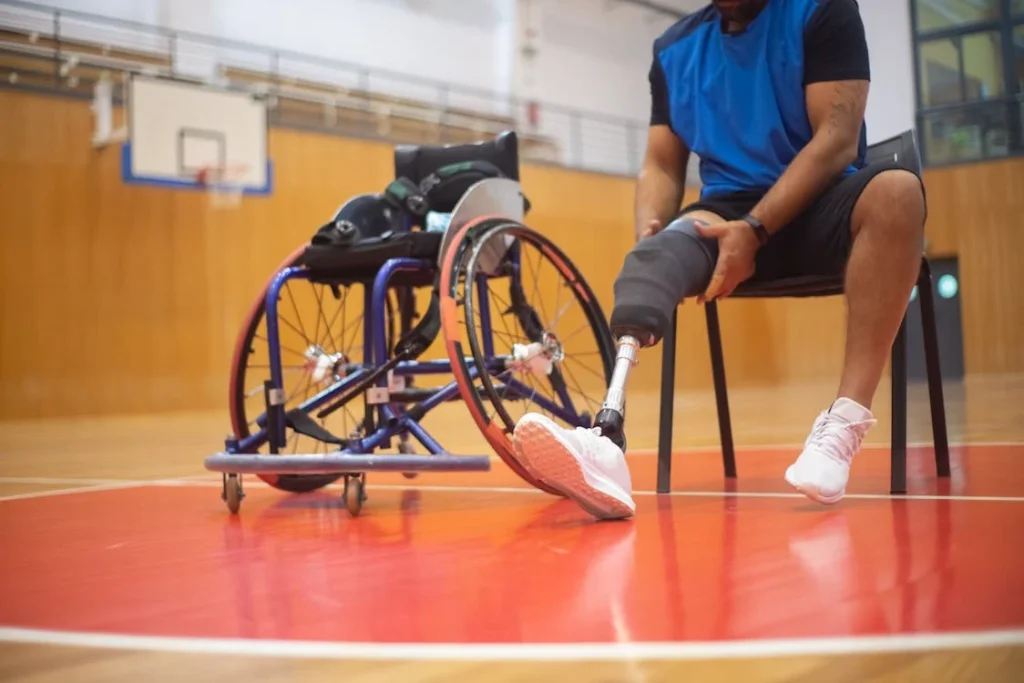
The Role of Physiotherapy in Early Weight-Bearing
How Movement Training Enhances the Benefits of Early Prosthetic Use
Fitting a prosthetic early is a crucial first step, but it’s only part of the journey. What truly completes the process is targeted physical therapy.
As soon as you’re cleared to begin weight-bearing, your rehabilitation team—especially your physiotherapist—plays a central role in helping you use your new limb correctly and confidently.
When you start therapy soon after fitting, your body adapts quickly. Your physiotherapist will begin with simple, low-impact tasks: standing on both legs, shifting weight side to side, or taking a few guided steps.
These actions may seem small, but they create a powerful feedback loop. Your body learns how to move again. Your brain begins to map the new movements. And your confidence grows.
One of the most underrated benefits of physiotherapy at this stage is posture correction. After an amputation, patients tend to compensate by leaning to one side or overusing the remaining limb.
This can cause long-term problems like back pain, hip strain, and even scoliosis. But when physical therapy is paired with early prosthetic fitting, it helps rebalance the body. It trains you to walk tall and aligned, avoiding future complications.
Therapists also work on strengthening muscles around the residual limb. These muscles are critical in helping you control your prosthetic, especially during complex movements like climbing stairs or walking on uneven ground.
Strengthening them early gives you better command of your prosthesis, and more importantly, it helps you avoid fatigue or injury as you increase your activity levels.
Moreover, physiotherapy helps with coordination. Losing a limb changes how your body distributes weight and manages momentum. Your sense of balance needs a full reset.
Therapy helps with that. With tools like balance boards, parallel bars, and core strengthening drills, your body relearns how to respond to shifts and changes in position.
Think of your physiotherapist as your coach. Their job is not just to help you recover, but to help you thrive. When physical therapy and early prosthetic fitting go hand in hand, the results are quicker, safer, and far more complete.
Social Reintegration and Lifestyle Improvements
How Early Mobility Opens the Door to Daily Life and Relationships
For many patients, the hardest part of amputation isn’t the physical loss—it’s the feeling of isolation. People worry about being able to work, care for their families, or even just meet friends.
That sense of distance from normal life can be emotionally draining. But early weight-bearing changes the narrative.
When you begin moving early with a prosthetic, your ability to rejoin everyday life comes back faster. This includes returning to simple routines: walking to the market, preparing meals, visiting neighbors, or attending community gatherings.
These small activities are emotionally powerful. They help you feel human again.
Returning to work is another big milestone. People often fear that they will no longer be useful at their job or that their co-workers will treat them differently.
But when you start weight-bearing early, you’re much more likely to return to your role quickly and with confidence. Employers and colleagues notice that you’re recovering fast. That builds respect and shows that you’re still capable and committed.
Even at home, early movement helps restore balance. You’re no longer confined to bed or dependent on someone else for daily tasks. You can help with chores, play with children, and participate in family discussions.
This boosts not only your own morale but also relieves the emotional burden on your loved ones. When they see you standing, moving, and smiling again, they begin to heal too.
On a more personal level, self-esteem also gets a boost. Using your prosthetic early allows you to dress more easily, maintain hygiene, and feel physically put together. You look more like yourself, and that creates a powerful psychological lift. You’re not just surviving—you’re living.
Ultimately, early weight-bearing helps you move from being a patient back to being a person. It reopens the door to relationships, routines, and responsibilities. And that’s where true recovery lies—not just in the clinic, but in the life you return to.
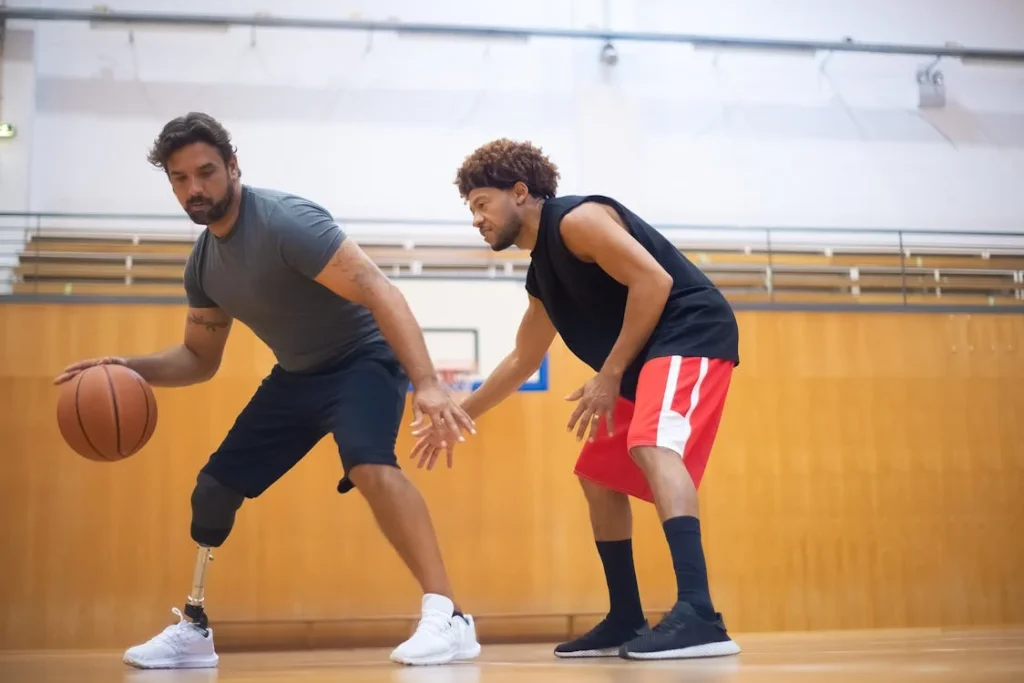
Technological Support for Early Fitting
How Modern Prosthetic Designs Make Sooner Fitting Safer and Smarter
One of the reasons early prosthetic fitting has become more common—and more successful—is because of the advancement in prosthetic technology. Today’s prosthetic systems are designed to accommodate healing limbs and adjust in real-time to the changes that happen in those early weeks and months.
Take, for example, modular socket systems. These are lightweight, adjustable prosthetic sockets that can expand or contract based on your limb’s shape and size.
Because swelling decreases rapidly in the first few months, these adjustable systems allow you to keep using the same socket without constant refitting. That’s a game-changer.
Then there are soft liners made from silicone, gel, or thermoplastics. These liners cushion your residual limb and distribute pressure evenly, reducing the risk of blisters or pressure sores. That makes early weight-bearing not just possible—but comfortable.
Advanced foot and knee components also play a big role. In the past, early prostheses were simple and stiff. They didn’t provide a natural gait.
But today, even preparatory limbs often feature dynamic response feet or microprocessor-controlled knees. These tools mimic natural walking and provide smoother transitions, which helps new users feel stable and confident from day one.
Technology has also improved the monitoring of progress. Some modern sockets and limbs come with sensors that track your steps, pressure points, and alignment.
Your prosthetist can use this data to fine-tune your setup, ensuring that you’re bearing weight properly and not developing bad habits.
And let’s not forget about tele-rehabilitation. If you live far from a clinic or need ongoing support, many providers now offer remote consultations.
Your prosthetist or physical therapist can watch your movements via video and suggest changes or exercises. This type of support ensures that early fitting stays safe and on track—no matter where you live.
So if you’re worried that early fitting might be uncomfortable or risky, rest assured: modern prosthetics are designed to support healing limbs and adjust to your needs. Technology isn’t replacing human care—it’s enhancing it.
Empowering Families and Caregivers Through Early Progress
Why Early Weight-Bearing Benefits Everyone Around You Too
Recovery from amputation is never a solo journey. Families and caregivers play a central role—emotionally, physically, and logistically. What many don’t realise is that early prosthetic fitting can make the journey easier not just for the patient, but for the entire support system.
When you begin walking and bearing weight early, your dependency decreases. Tasks that once required help—like moving to the bathroom, making tea, or dressing—can now be done independently.
This lightens the load on caregivers, both physically and emotionally. They no longer need to be available around the clock. That reduces burnout and restores balance to the home.
For children, parents, or spouses watching you recover, early progress is a huge relief. They see that you’re okay, that you’re improving, that the future isn’t as bleak as it first seemed. This kind of emotional reassurance goes a long way in maintaining a stable, supportive environment at home.
Early mobility also allows for quicker family reintegration. You can attend events, school meetings, or family functions without relying entirely on others. That makes you feel like yourself again, and it also reassures your loved ones that their world is slowly returning to normal.
Even from a financial angle, early progress benefits everyone. Caregivers may not need to take extended time off work. Family budgets don’t get stretched by long hospital stays, transport needs, or home assistance services. Everyone’s stress is reduced.
What’s most powerful is the shift in identity that early weight-bearing allows. You move from being “the patient” to being a parent, sibling, or spouse again.
Your role in the family becomes active, not passive. That shift strengthens not only your recovery, but the resilience of everyone walking this path with you.
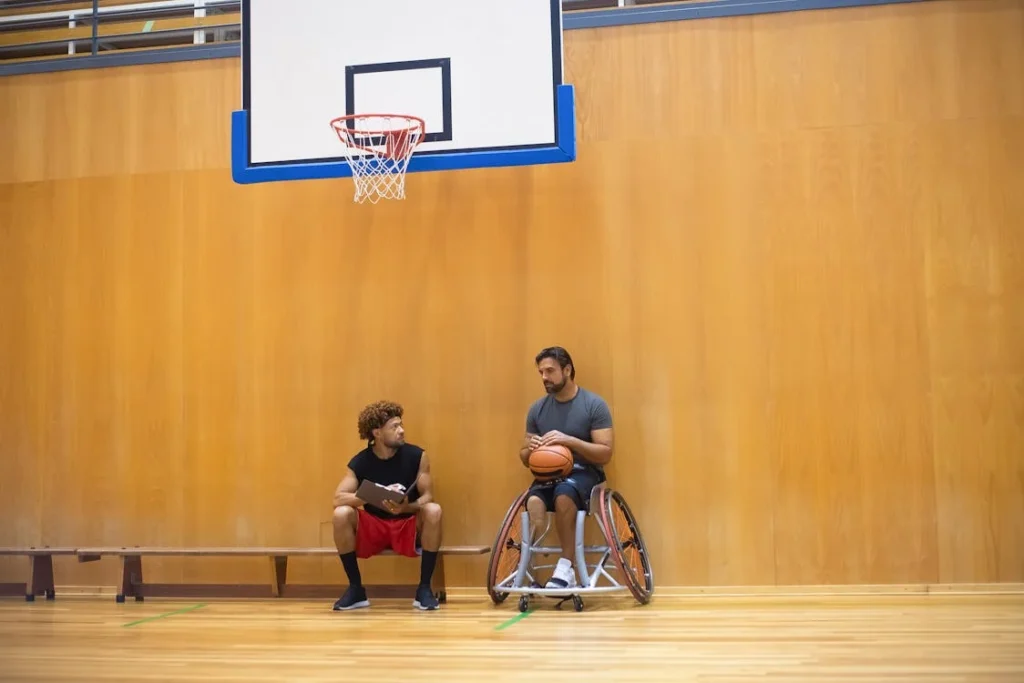
Conclusion
When it comes to prosthetic fitting, time is more than just a number. It’s a tool. The earlier you begin to bear weight safely, the more advantages you unlock. From faster healing and better limb shaping to stronger mental health and long-term savings, early weight-bearing is a strategy that works.
At Robobionics, we’ve seen the difference firsthand. We’ve helped patients fit within weeks—and we’ve seen them thrive. Our message is simple: Don’t wait longer than you need to. Fit sooner. Move smarter. And give yourself the strongest start possible on your recovery journey.



